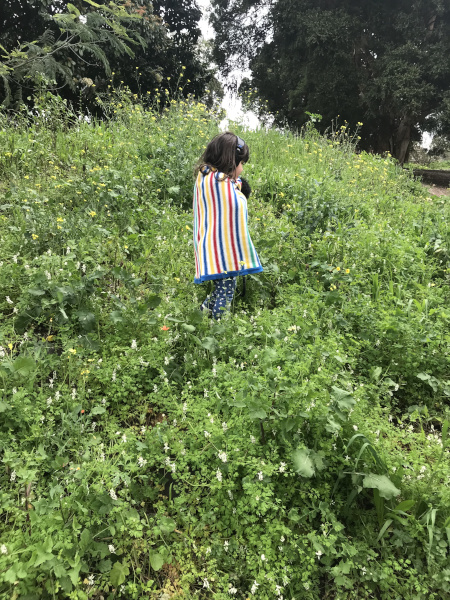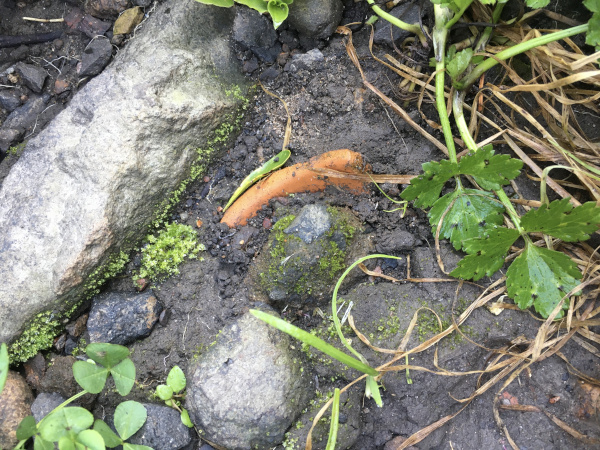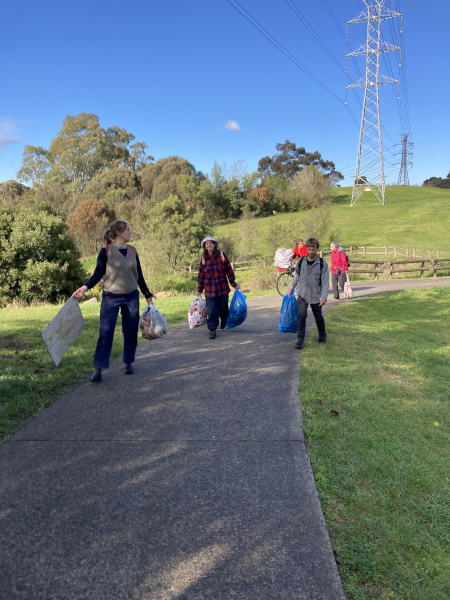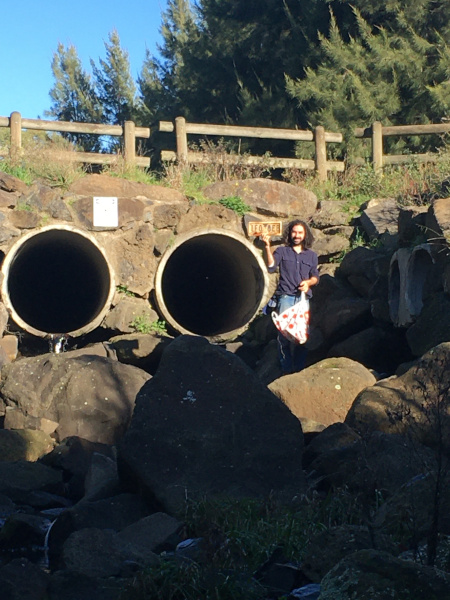
We will never clean the creek
by Kate Hill
- View Kate Hill's Biography
Kate Hill is an artist and gardener currently researching clay-soil habitats through a creative practice PhD at Monash University.
We will never clean the creek
Kate Hill
In cities especially, urban planning suggests that water should stick to its allocated paths and channels. There are multiple canals, gutters and pipes installed in roads and on buildings to direct water down to creeks and eventually out into the sea. In these systems, water is kept separate from its ecological kin, with waterways conceived of as discrete lines rather than a part of vast spongey masses. Landscape architects Anuradha Mathur and Dilip da Cunha highlight that in Western discourses such as cartography, design, policy, and politics, not only is there a perceived binary between water and land, but a hierarchisation, where "...water is set up to be dominated by land" (1984, 139). As an alternative to this epistemological split, da Cunha and Mathur propose thinking about the interwoven nature of water and land as a broad wetness. Their theorisations influence not only the way we might think about water on the ground, but the ways in which it falls, is collected, and is always already entangled. In their words:
Rain and other forms of precipitation are not assumed to fall to a surface as water that forms rivers that run to a sea. It rather deepens a wetness that is already everywhere, in the air, earth, flora, and fauna. This wetness does not flow as water does; it holds, soaks, blows, seeps, osmotes, and transpires, moving in nonlinear and emergent ways to ever-extending holdings of wetness, holdings that eventually become an ocean, an all-encompassing wetness in which there is no such thing as dryness. There is only wetness of varying degrees. The sea is very wet, the desert less so. (1984, 139)
We will never clean the creek draws on da Cunha and Mathur's notion of varying degrees to explore some of the complexities of environmental activism, filtered through the medium of sound. Specifically, their turn away from binary thinking—such as may be evidenced in clean-up efforts and striving for purification—prompt us to embrace the inevitability of contamination, encouraging modes of care which are realistic and generative. Across our audio work, we weave together a series of field recordings captured on some of our collaborative litter collection walks, situated on stretches of the merri merri (Merri Creek) in Narrm/Melbourne on Wurundjeri Woi-wurrung land. Sonically, the voices of our intergenerational gang are mingled with many others—aqueous, argillaceous, vegetal, petrochemical. Depending on who is holding the recording device and how they are situated, our conversations are either centred, obscured, or completely overridden. This lively acoustic weave—reflective of our broader urban environment—suggests that we are not listening to the creek's ecology from a distance, rather we are inside of it (Oades 2023).

Dilân listening, 2022. Photo credit: Sophie Moorhouse-Morris
If water and land—and indeed humans—are in constant circulation around and within each other, then so too are our petrochemical kin. Toxins, waste and litter is now, as we know, woven into geological and biological forms so much so that we are not separate, but seeping, osmoting, and co-constituted. Any perceived division or boundary is merely an embankment, a structure considered to contain but that is actually porous and always eventually eroded (Povinelli 2021, 128-9). The degree to which this seepage occurs is political, depending on and differing across lines of race, class, and positioning in the biological and geological order. Extractive practices are relentlessly built on the project of extracting 'resources' from indigenous lands and leaving toxins behind, and parts of the creek we clean vary depending on whether the Local Government Area can afford street cleaners and biodegradable packaging.
Knowing that pollution entanglements are politically and materially messy, endless, and ongoing, supports what we might refer to as our manifesto— 'we will never clean the creek'. By this we mean we are ever navigating the relentless and inevitable circulation, seepage and osmoting of waste in the world—including our place in that—and trying to lean into the complexities and happenings that emerge through human and non-human assemblages (Tsing 2015, 23). As Feminist scholar Alexis Shotwell states "if we want a world with less suffering and more flourishing, it would be useful to perceive complexity and complicity as the constitutive situation of our lives, rather than as things we should avoid" (2016, 8). We focus on our enmeshment through engaging in durational acts of picking tiny pieces of polystyrene out of sticky clay, or gradually unwinding tissue thin plastic that has been wrapped around and around a branch, paying attention to the intriguing microenvironments. We delight in collecting a plastic fern frond after being tricked that it is a living plant, or in finally unwedging a billiard ball from a rock through collective effort. As such, we recognise resistance in ourselves as well as in the creek and its multiple constituents. We ponder on our agency and decisions about what should be collected and what should remain—paper, given its readiness to break-down, or ceramic shards, given their material proximity to rock.

Ceramic and rock, 2022. Photo credit: Kate Hill
Anthropologist Anna Tsing encourages us to recognise the potential of collaboration, with other humans as well as non-humans, in making life at the edges of capitalist ruins. It is within the argillaceous environment of the merri merri where we find this overgrown, messy potential, where we—in her words—'catch the scent of the latent commons' (Tsing 2015, 282). While we don't have answers to the questions raised by ever-growing planetary destruction—nor do we seek them—we find these grapplings generative. Together on the creek, we take not only another vantage point in relation to the dominant systems and flows of the city, but make a small injunction against the dominant modes of consumption and production. We remind ourselves that for as long as our economy is predicated on newness, we will never clean the creek even as we do it to a degree. We meet not at a cafe for a cup of coffee, but at the creek for 103 cups of coffee, 67 bottles of water, 82 packets of chips, 29 sachets of chocolate. Litter collecting is an embodied, collective act of care. It is study, it is an antidote to our experience as alienated individuals in late capitalism.

Coming back with bags, 2022. Photo credit: Ender Başkan

Treasure, 2022. Photo credit: Kate Hill
Acknowledgment
This work has sprung from the fertile clay of the merri, and would not have been possible without the love and collectivity of my co-creekers, Sophie Moorhouse Morris, Ender Başkan, Dilān Başkan, Isadora Vaughan and Curly Green Carter Vaughan. Thank you!
Works cited
ABC Radio Adelaide. 2021. "Hypersaline Water Leaking into Adelaide Mangroves as 'Horrible History Repeats'", ABC News, August 19, 2021.
Mathur, Anuradha, and Dilip da Cunha. 2020. "Wetness Is Everywhere: Why Do We See Water Somewhere?" Journal of Architectural Education (1984) 74, no. 1: 139--40.
Oades, Roslyn. 2023. Audiosketch S2 EP3: An art date with Hildegard Westerkamp (Part 1), interview by Roslyn Oades. Audiosketch. April 3rd, 2023. Audio: 41:06.
Povinelli, Elizabeth A. 2021. Between Gaia and Ground: Four Axioms of Existence and the Ancestral Catastrophe of Late Liberalism. Durham: Duke University Press.
Shotwell, Alexis. 2016. Against Purity: Living Ethically in Compromised Times. Minneapolis: University of Minnesota Press.
Tsing, Anna Lowenhaupt. 2015. The Mushroom at the End of the World: On the Possibility of Life in Capitalist Ruins. Princeton, NJ: Princeton University Press.
Footnotes
- Anthropologist Elizabeth Povinelli explains embankments as power structures that protect some whilst disturbing others, and always leave tailings behind. Elizabeth A. Povinelli, Between Gaia and Ground: Four Axioms of Existence and the Ancestral Catastrophe of Late Liberalism (Durham: Duke University Press, 2021).

